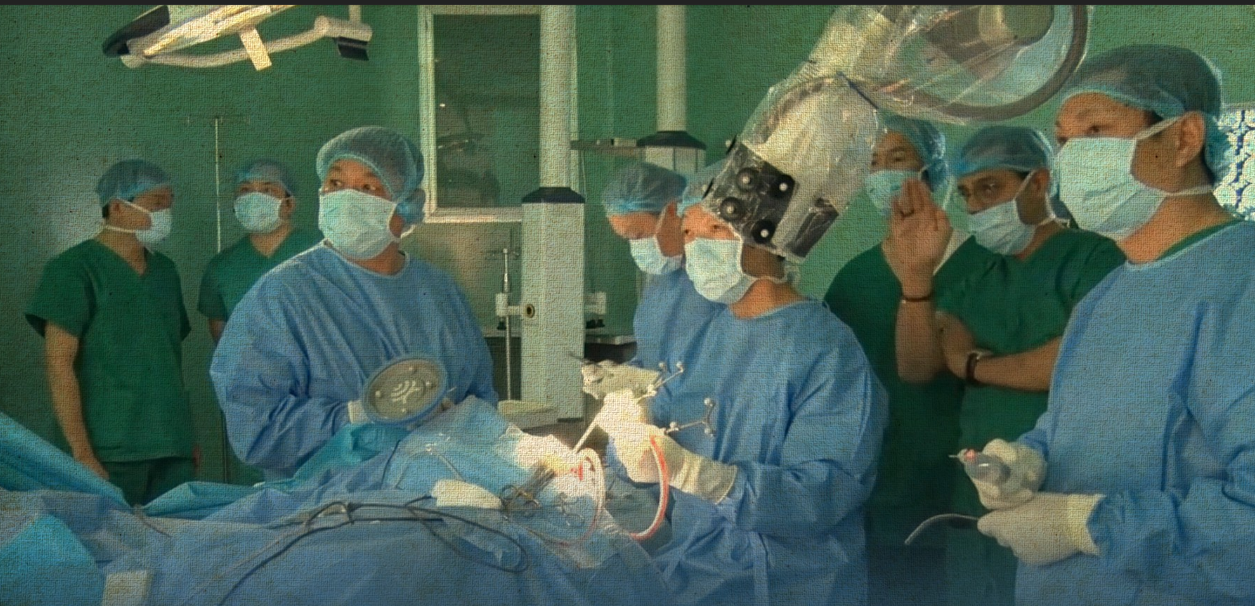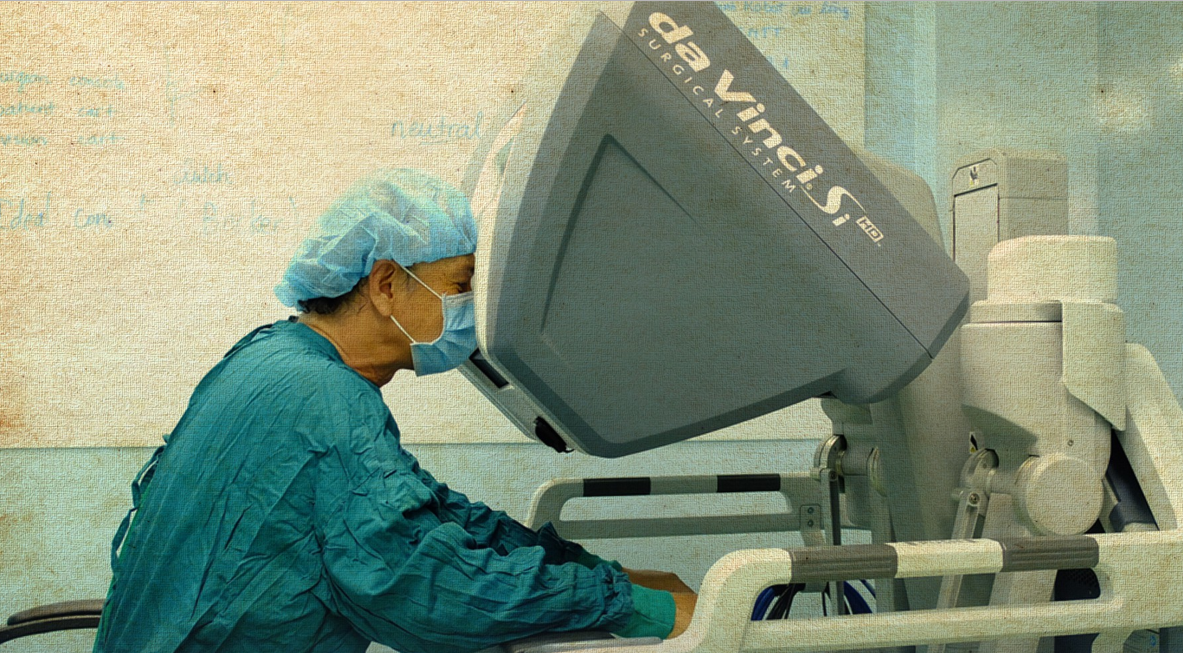An increasing number of hospitals in Vietnam are adding robotic surgery to their medical arsenal, hoping the extra set of mechanical hands will help give their patients some much needed relief.
Robotic surgery, computer-assisted surgery, and robot-assisted surgery are terms for technological developments that use robotic systems to aid in surgical procedures.
In 2014, the Vietnam National Children’s Hospital in Hanoi was the first to deploy the U.S.-made DaVinci surgery system for children's endoscopic operations.
Between 2016 and 2017, more modern versions of the DaVinci robot began appearing at Binh Dan Hospital and Cho Ray Hospital, both located in Ho Chi Minh City, as well as at Bach Mai Hospital in Hanoi.
Dr. Pham Gia Hien, head of the pediatric neurosurgery center of Vietnam National Children’s Hospital, stressed that this type of technology, despite its astronomical cost, is the future of surgery.
A wonder tool for surgeons
In February 2019, the People's Hospital 115 in Ho Chi Minh City amazed medical experts with a successful brain operation using a system known as Modus V Synaptive II from Canada.
This state-of-the-art surgery tool cost US$2.3 million, and marked its host hospital as the pioneer in applying robotic assistance in neurosurgery.
The equipment will aid the hospital’s staff with its 2,350 yearly neurological operations.
On February 15, surgeons at the People's Hospital 115 spent a mere 1.5 hours performing a successful brain tumor operation on a female patient from Tay Ninh, a province neighboring Ho Chi Minh City.
Such an achievement came with the expertise from Dr. Chu Tan Si - head of the nerve surgery department - who undertook training in the U.S. in 2017 and in Switzerland in 2018, and the assistance of Professor Amin Kassam - vice-president of neurosciences at Aurora Health Care, a U.S.-based non-profit health care network.
"Thanks to the robotic system, operations can take place in a much shorter amount of time compared to microsurgery - that is, using a microscope without any robotic navigation," Dr. Si said.
"Instead of looking at your hands, you look at a large screen while manipulating the robotic system."
 |
| A group of doctors perform a surgery using computer-assisted technology. Photo: Tuoi Tre |
According to its website, Modus V Synaptive II provides a larger field of view, a higher depth of field and more natural color reproduction.
This makes for a clear view of critical anatomical structures throughout the operation.
Dr. Si noted the benefits that such robotic surgery offers to both surgeons and patients.
"It adds confidence to the doctor with its AI [artificial intelligence] technology that can tell the difference between sensory neurotransmitters and can even advise the best approach route to avoid damage."
Less pain, quicker recovery, lower cost
To the patients, computer-assisted surgery means fast-track recovery and reduced pain.
An elderly patient at Binh Dan Hospital could move around and eat normally only two days after her liver removal operation in August 2017.
"The surgeons and their robotic arms made this surgery such an easy pill to swallow. Now I can be up and running again," the patient said.
As proof of the minimal pain robotically-assisted surgery can offer, doctors at Cho Ray Hospital have performed two successful live kidney transplants using robotic assistance.
T.V.T., a 59-year-old patient from the coastal city of Vung Tau, managed to walk about by himself and eat light rice porridge only days after his esophageal surgery here.
Dr. Do Ba Hung, deputy director of Binh Dan Hospital, said that robotic surgery allows a 3D field of view with high-definition resolution and a 12x magnification effect.
Binh Dan Hospital now offers robotic surgery service for urinary excretion operations and general surgery, with prices ranging around VND117-131 million ($5,000-5,600).
This amount is much lower than that for the same service in Singapore (around $26,000) and in the U.S. (around $41,000).
Also, the medical insurance policy has recently approved its coverage of certain robotic surgery types such as spinal and joint replacement operations.
According to Nguyen Ta Tinh, head of the policy faculty from Vietnam Social Security, children, the elderly and people who have made contributions to the country are entitled to 40 percent of the total cost, and regular patients 30 percent.
 |
| Surgeons operate the robotic arms while watching an HD screen. Photo: Tuoi Tre |
A cause for concern
The robotic systems are an expensive investment, priced from $2.3 million to $3.5 million, according to data gathered by TuoiTre (Youth) newspaper.
Surveys have revealed that there are around 3,000 robotic surgery systems in the U.S., 100 in South Korea and around ten in Vietnam.
Besides those available in Ho Chi Minh City and Hanoi, the Maternity and Pediatrics Hospital in the northern province of Quang Ninh performed for the first time a hysterectomy surgery on a 49-year-old patient from Van Don District in November 2018.
Its director, Nguyen Quoc Hung, said that he felt a need for a more powerful device after this test run.
Robotic surgery systems, according to medical experts, is a cautious investment as the cost can be up to $4.3 million apiece.
Hospitals are advised to think twice regarding the functionality of the tool and their target patients.
According to Dr. Hien from Vietnam National Children’s Hospital, the cost of robotic surgery, for the patient, is 20 times as high as that of regular endoscopic operations.
He cautions against a technology race, quoting what happened in the Philippines, where hospitals paid through the nose for devices that fall into disuse because of understaffing.
Like us on Facebook or follow us on Twitter to get the latest news about Vietnam!




















































